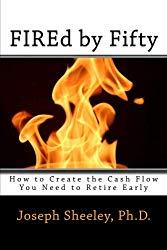So, at this point in the saga (I think it is a saga by now), seven years had passed since the late night meeting in my friend’s apartment where I bought the first shares, representing 2% of the company. I had graduated school and moved to Tennessee. My friend’s original company, Ferris Productions, had been bought out by Gamecom and was now trading on the NASDAQ Bulletin Board exchange under the new name, Virtra Systems. I had a stock certificate for about 330,000 shares of Virtra systems at this time.
(This is part 5 of the story. To find part one, go here.)
Trading in the shares at this point were, interesting. When I received the shares they were trading for about $0.25 each, making my original $5000 investment now worth about $83,000. Each time the company would sell a 3 hundred-thousand dollar virtual reality system, however, the stock price would jump, sometimes up to 40 cents, sometimes to 50, sometimes even to 60 cents or more. After the jump, the stock would settle back down to the low 30 or 25 cent range again. Since this was by far the largest holding in my account at this time, this made my stock portfolio value double in a period of a day or two. The company was still not making any profits since the cost of making the systems and running the company swallowed up and money made from the sale of the systems.
This was also the time of the Dot Com market where internet companies like Priceline, Pets.com, and WebVan.com were going public and seeing their share prices go from $15 to $150 in one day. This was before Google, but Amazon started at about the same time and also saw it’s share price soar. At one point the market cap of Priceline, which sold extra seats on airlines, was worth more than the value of all of the airlines combined! Companies were taking the huge amounts of money investors were giving them and opening offices in every major city, hiring thousands of workers, and setting up workspaces with free lunches, ping-pong tables, and napping lounges. Online retailers were shipping everything for free, which was addressing a serious issue they had – shipping costs that would make their prices higher than those in brick-and-motor stores. Online services companies were basically giving most things away for free and were not selling advertisements, meaning they were not creating any revenue. The idea was that you wanted to get big fast and then worry later about making a profit. Investors didn’t care because the stock prices were going up so fast, so they happily paid huge amounts for companies run by twenty-somethings with no profits in sight.
(Note, if you click on a link in this post and buy something from Amazon (even if you buy something different from where the link takes you), The Small Investor will receive a small commission from your purchase. This costs you nothing extra and is the way that we at The Small Investor are repaid for our hard work, bringing you this great content. It is a win-win for both of us since it keeps great advice coming to you (for free) and helps put food on the table for us. If you don’t want to buy something from Amazon or buy a book, how about at least telling your friends and family about our website as a great place to learn about investing and personal finance. Thanks!
Check out my new book on how to supercharge your finances, FIREd by Fifty: How to Create the Cash Flow You Need to Retire Early

There was an issue with the Dot Coms that also existed for Virtra Systems, however, called “limited float.” Float is the number of shares available for purchase, which can be radically different from the number of shares issued if insiders and others have a lot of the shares locked up with no plans to sell them anytime soon. All of the Dot Com stocks had a huge amount of ownership by the founders and early employees, whose shares were typically locked up for a period of 6 months to a year after the date of the initial public offering as part of the agreement made during the IPO. This meant that while the stock might be trading for $150, only 100,000 of the total 10,000,000 shares might actually be trading actively. This can cause the share price to change rapidly since there was such a short supply of shares and a lot of people wanting to buy those shares. Think of the high prices Apple was able to charge for their i-Phones, and then the even higher resale value, when the devises first became available and there were a very limited number.
Greed was also a factor in the Dot Com blow-up. Because the price of these Dot Com stocks went up rapidly, people were eager to buy the shares since they thought that they would also see their shares go up rapidly in price. They didn’t care if they were paying twice as much as the shares sold for a day before because they figured they could sell for a day later for twice as much. People tend to draw lines and see patterns where none exist. Buying high ad selling higher only works as long as there is a bigger sucker out there than you who will buy the shares for more than you paid. Once you are out of suckers, the price crashes rapidly.
Eventually the shares of the founders and first employees also come out of lock-up and all of the freshly minted millionaires and billionaires are eager to sell shares and start living the good life. This means that there will suddenly become a lot of shares for sale with the same number of buyers. This will typically cause the share price to drop since you now have lots of shares available and only a few people who actually want to buy them. To pile on the misery, because the share price is dropping, the greed people once felt that caused them to pay ever more for the stock suddenly turns to fear where they become willing to sell at any price. It is only after most of the shares are out there, available for sale, that the true value of a company is reflected in the stock price.
For many of the dot coms, this value was around $0 per share, since they had no earnings and little to no likelihood of ever turning a profit, which is what caused the Dot Com bust in early 2000. One of the sadest stories I read from the time was about a lady who worked for one of these start-ups and who had about a million dollars in paper profits. She wanted to sell her stock and use the money for a new home she was building. Her brokers convinced her that rather than sell her shares and pay the taxes on the profits , she should take out a loan against the shares. When the stock of her employer crashed when the shares came out of lock-up, she actually ended up more than $350,000 in debt to the brokerage house! In addition, the company folded and she was out of a job.

Want all the details on using Investing to grow financially Independent? Try The SmallIvy Book of Investing.
Virtra Systems had a similar issue in that there were only a few shares out there actively trading. The rest were owned by people like me who had gobs of shares from the original issue. This meant that a few people, trading a small percentage fo the company, could cause the shares to go up 100% or more in a day, which they frequently did. The true value of the company would not be known until people like me sold some shares and there was a larger float available.
Having seen my $5000 investment go to $80,000, with brief jumps to $180,000 or higher, I was eager to sell off some of my shares to make sure that I didn’t see it all evaporate. I was not locked up, but because of the way I had purchased my shares, I was told by my broker that there was a special procedure that we would need to follow to sell the shares. We would need to have a particular broker in New York make a ruling on whether I was able to sell my shares, and this would need to be done each time that I wanted to sell. The publication of an announcement of my intention to sell the shares would also be necessary.
I went ahead and paid the money to the lawyer to make the ruling. The announcement was also put out, which I thought was pretty cool since most of the time this is for some big-wig wanting to sell millions of dollars of shares, not for little folk like me and out $100,000 stakes. Little did I know that this process would become so cumbersome. I was to discover that the long wait was far from over.
To Be Continued….
Have a burning investing question you’d like answered? Please send to [email protected] or leave in a comment.
Follow on Twitter to get news about new articles. @SmallIvy_SI
Disclaimer: This blog is not meant to give financial planning or tax advice. It gives general information on investment strategy, picking stocks, and generally managing money to build wealth. It is not a solicitation to buy or sell stocks or any security. Financial planning advice should be sought from a certified financial planner, which the author is not. Tax advice should be sought from a CPA. All investments involve risk and the reader as urged to consider risks carefully and seek the advice of experts if needed before investing.
